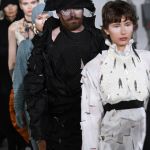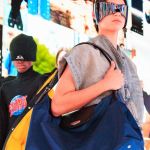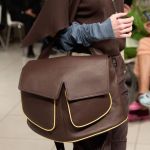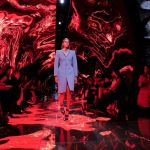
Balenciaga takes us into the future
With a show that is pure avant-garde
October 1st, 2018
Paris Fashion Week's Sunday morning was revitalised by the futuristic SS19 Balenciaga collection, a cutting-edge show created by Demna Gvasalia.
Starting from the location, the runway appeared immediately very interesting. The runway, in fact, was basically an installation by Canadian visual artist Jon Rafman: models would walk in a tunnel of screens that alternated images of fire, rain, space and Windows update message, before turning into darker nuances. Rafman's work explores the impact technology has on our lives and our society and, judging from the visuals and the techno soundtrack of the show, it's not a good one.
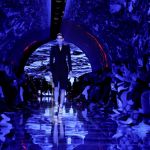
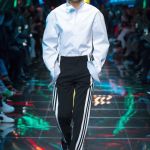
For this collection, Demna played with the logo in a more sublte way, logo that in the past would have been at the center of his designs, becoming one of the reasons of his success. The writing Balenciaga Paris, in different fonts, like the super uncool Comic Sans, covers girly dresses with straps, men's shirts worn with leather skinny pants, deconstructed or sculpture dresses, while the classic logo appears on simple colorful T-shirts and tight tops to be worn underneath the jacket, plus the Eiffel Tower prints comes on coats and short dresses.
The accessories did not let down. Second skin high boots with squared tip, leather trapeze clutches with logo, pointy stilettos with straps, which also decored the tote bags, while men sported simple black leather shoes and cowboy boots. Demna, in his evolution into a grown-up fashion designer, did not bring on the catwalk any sneaker.
The cast of the show was diverse, from Millenials to Baby-Boomers, and reflects perfectly the kind of audience Demna wants to appeal to. He was able to overcome the concept of sportswear (something not easy, think of Off-White), or in any case to interpret it in a new and different way, creating a glamour, polished but wearable collection, that will soon be photographed on the streets around the world.
























































































